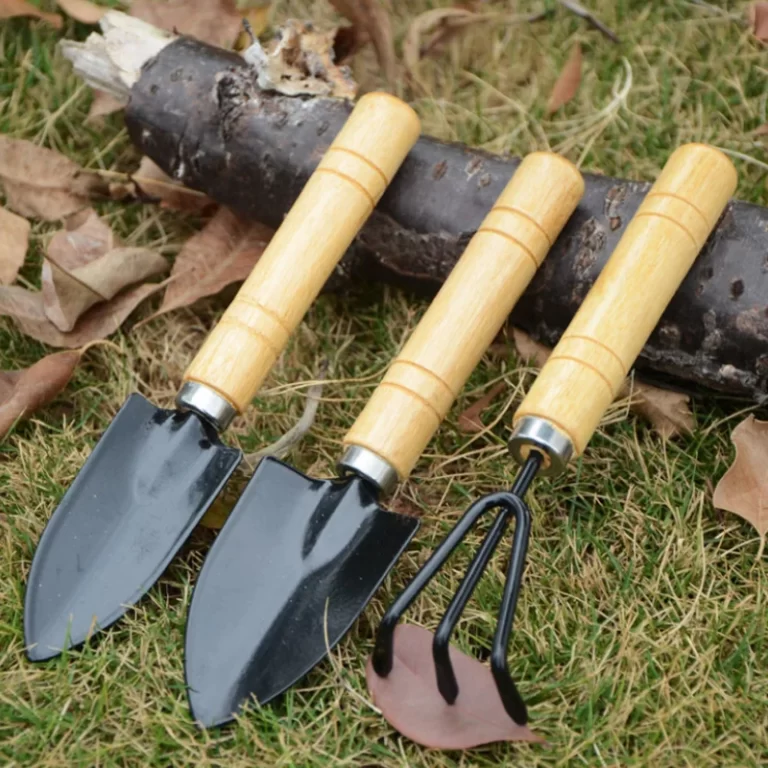Understanding the Importance of Weed Control
Weeds pose a significant threat to the health and beauty of gardens, lawns, and agricultural fields. These unwanted plants compete with desirable vegetation for nutrients, water, and sunlight, often stunting the growth of cultivated plants. Moreover, weeds can harbor pests and diseases, further compromising the well-being of gardens and crops. Effective weed control not only enhances the aesthetic appeal of outdoor spaces but also promotes the robust growth of intended plants. This is where weeder come into play, serving as invaluable tools in the fight against invasive vegetation.
Weeders encompass a wide range of implements designed to remove or suppress weeds, from simple hand tools to sophisticated mechanical devices. By utilizing the right weeder for the job, gardeners and farmers can maintain healthy, productive spaces with minimal effort. Understanding the various types of weeders available and their specific applications empowers individuals to tackle weed problems efficiently and effectively. As such, weeders play a crucial role in sustainable land management, reducing the need for chemical herbicides and promoting environmentally friendly gardening practices.
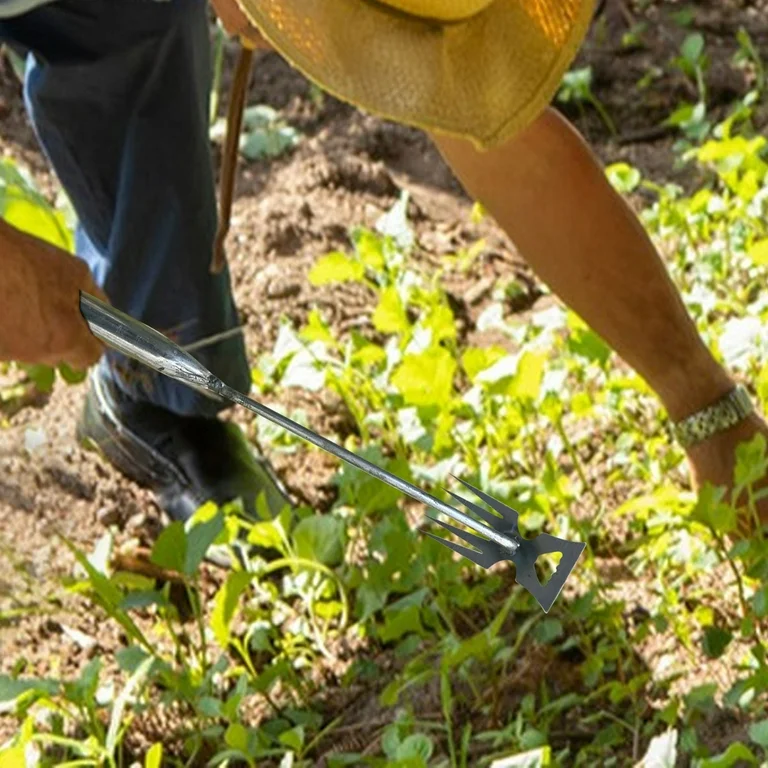
Types of Weeders: From Manual to Motorized
The world of weeders offers a diverse array of tools to suit different needs and preferences. Manual weeders, such as hand forks and dandelion diggers, provide precise control for removing individual weeds in small areas. These tools often feature long handles to reduce back strain and pointed tips to extract weeds from the root. For larger areas, hoe-type weeders like the stirrup hoe or Dutch hoe allow users to tackle weeds while standing upright, covering more ground efficiently. Wheel hoes combine the action of a hoe with the ease of a wheeled design, making them ideal for maintaining garden rows.
Moving into more advanced options, motorized weeders harness the power of electricity or gas engines to automate the weed removal process. Electric weed whackers, also known as string trimmers, use rapidly spinning nylon lines to cut weeds at ground level. Gas-powered brush cutters offer even more power for tackling tough, woody weeds in larger areas. Additionally, specialized weeders like flame weeders use heat to destroy weeds, while weed pullers employ mechanical leverage to extract weeds with minimal soil disturbance. This variety ensures that there’s a weeder suitable for every situation, from delicate flower beds to expansive agricultural fields.
Choosing the Right Weeder for Your Needs
Selecting the appropriate weeder depends on several factors, including the size of the area to be maintained, the types of weeds present, and the user’s physical capabilities. For small gardens or precision work around delicate plants, hand-held weeders like the fishtail weeder or Cape Cod weeder offer excellent control. These tools allow gardeners to target individual weeds without disturbing surrounding plants. In contrast, larger areas benefit from long-handled tools that reduce bending and provide greater reach. The choice between manual and powered weeders often comes down to the scale of the task and personal preference.
Manual tools are quieter, more environmentally friendly, and provide a good workout, while powered weeders can significantly reduce the time and effort required for large-scale weed control. The type of soil also influences weeder selection; sandy soils may require different tools than clay-heavy grounds. Additionally, consider the storage space available and the maintenance requirements of various weeders. Some motorized models demand regular upkeep, while simple hand tools require minimal care. By carefully evaluating these factors, gardeners can choose weeders that best suit their specific needs, ensuring efficient and effective weed management in their outdoor spaces.
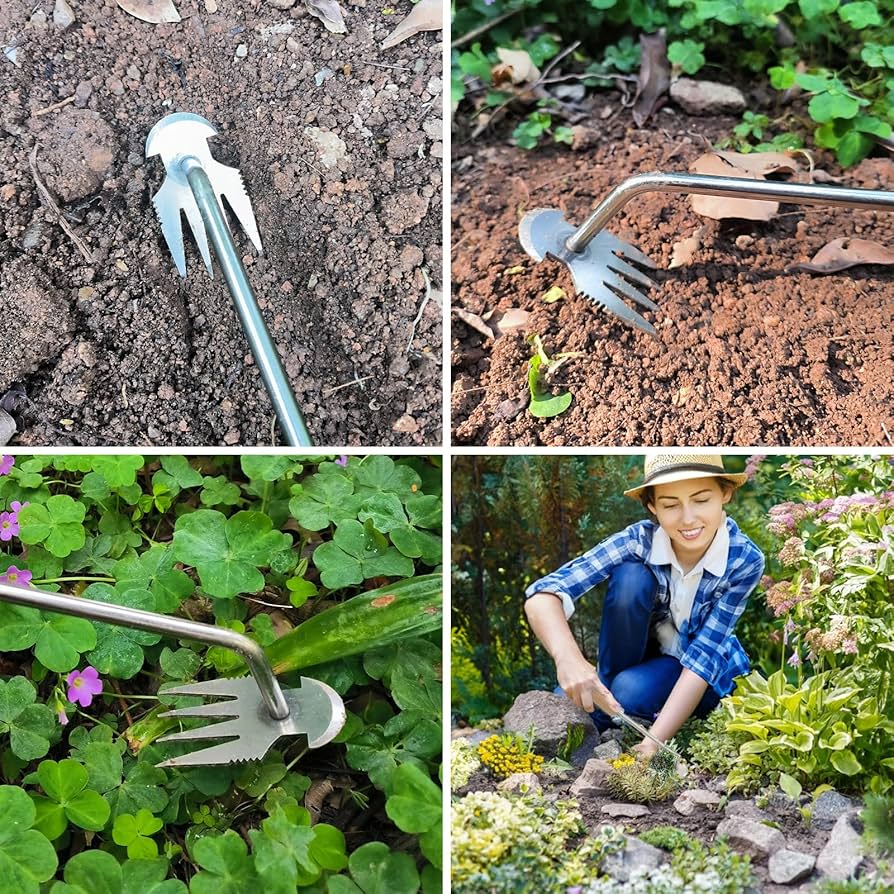
Techniques for Effective Weed Removal
Mastering proper weeding techniques enhances the efficiency of weed control efforts and minimizes damage to desired plants. When using hand weeders, it’s crucial to grasp the weed close to the ground and pull slowly to remove as much of the root system as possible. This approach prevents weed regrowth and reduces the likelihood of leaving fragments in the soil. For hoe-type weeders, shallow, horizontal strokes just below the soil surface effectively sever weed stems without bringing dormant weed seeds to the surface. When operating motorized weeders like string trimmers, maintaining a consistent height and angle ensures even cutting while protecting nearby plants from accidental damage.
Regardless of the tool used, weeding after rainfall or irrigation proves most effective, as moist soil allows for easier root extraction. Additionally, targeting weeds when they’re young and small prevents them from establishing deep root systems and producing seeds. For persistent weeds, repeated removal over time may be necessary to deplete their energy reserves and eventually eradicate them. Incorporating mulching into weed control strategies can suppress weed growth between active removal sessions. By employing these techniques and adapting them to specific garden conditions, users can maximize the effectiveness of their weeding efforts and maintain healthier, more vibrant outdoor spaces.
Maintaining and Caring for Your Weeders
Proper maintenance of weeders ensures their longevity and optimal performance. For manual tools, regular cleaning after use prevents soil buildup and rust formation. Wiping down metal parts with an oiled cloth provides an extra layer of protection against corrosion. Sharpening the edges of hoes and other cutting tools maintains their effectiveness; a file or whetstone can easily restore a sharp edge. Wooden handles benefit from occasional sanding and treatment with linseed oil to prevent splintering and weather damage. For motorized weeders, following the manufacturer’s maintenance schedule is crucial.
This often includes regular oil changes, air filter cleaning or replacement, and spark plug checks for gas-powered models. Electric weeders typically require less maintenance but should be inspected for cord damage and kept dry when not in use. String trimmers need frequent line replacement; keeping spare line on hand ensures uninterrupted work. Proper storage also plays a vital role in weeder longevity. Storing tools in a dry, covered area protects them from the elements and prevents rust. Hanging tools or using a tool rack keeps them organized and prevents damage from leaning or falling. By implementing these maintenance practices, gardeners can extend the life of their weeders and ensure they’re always ready for action when weeds threaten to invade.
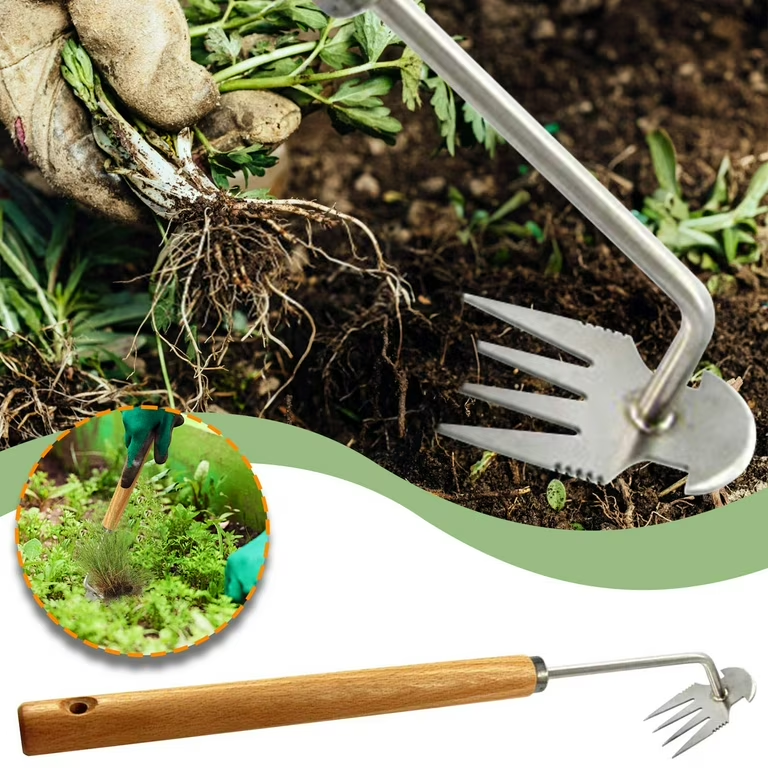
Eco-Friendly Weeding: Alternatives to Chemical Herbicides
As environmental concerns grow, many gardeners seek eco-friendly alternatives to chemical weed control. Weeders play a crucial role in this shift towards sustainable gardening practices. Manual and mechanical weed removal methods eliminate the need for potentially harmful herbicides, protecting soil health and beneficial insects. Mulching, when combined with regular weeding, effectively suppresses weed growth by blocking sunlight and conserving soil moisture. Organic mulches like straw or wood chips eventually break down, enriching the soil. Some innovative weeders employ heat or steam to destroy weeds without chemicals.
Flame weeders, for instance, use propane torches to apply intense heat, causing cellular damage that kills weeds. Similarly, steam weeders deliver a blast of superheated water vapor, effectively cooking weeds from the inside out. These methods prove particularly useful for weed control in hard-to-reach areas like cracks in pavement. Another eco-friendly approach involves using cover crops and companion planting to naturally suppress weed growth. Fast-growing, dense plants can outcompete weeds for resources, reducing their prevalence in gardens and fields. By embracing these alternative methods and utilizing weeders effectively, gardeners can maintain beautiful, productive spaces while minimizing their environmental impact.
The Role of Weeders in Commercial Agriculture
In commercial agriculture, weeders play a vital role in maintaining crop yields and reducing reliance on chemical herbicides. Large-scale farms often employ tractor-mounted weeders capable of covering vast areas efficiently. These implements include rotary hoes, tine weeders, and precision cultivators that can navigate between crop rows without damaging the intended plants. Such mechanical weed control methods not only reduce herbicide use but also help combat herbicide-resistant weed populations, a growing concern in modern agriculture. Additionally, robotic weeders have emerged as a promising technology in recent years.
These autonomous machines use advanced sensors and artificial intelligence to distinguish between crops and weeds, precisely targeting unwanted plants while leaving valuable crops untouched. This technology offers the potential for round-the-clock weed control with minimal labor requirements. For organic farmers, weeders serve as the primary defense against invasive plants, as chemical herbicides are not permitted in certified organic production. Flame weeders and other thermal methods find particular use in organic systems, offering effective weed control without chemical residues. By integrating various weeding techniques and technologies, commercial agriculturists can maintain productive fields while adhering to sustainable farming practices and meeting consumer demand for reduced chemical use in food production.
Innovative Weeder Designs: The Future of Weed Control
The world of weeders continues to evolve, with innovative designs addressing the challenges of modern gardening and agriculture. Battery-powered weeders combine the portability of manual tools with the efficiency of motorized options, offering eco-friendly alternatives to gas-powered equipment. These cordless tools provide the freedom to work in remote areas without the limitations of power cords or the noise and emissions of gas engines. Another emerging trend is the development of multi-functional tools that combine weeding capabilities with other gardening tasks. For instance, some weeders now incorporate seed-planting or fertilizer-spreading functions, streamlining garden maintenance processes.
Ergonomic designs receive increased attention, with manufacturers focusing on reducing user fatigue and improving comfort during extended use. Adjustable handles, cushioned grips, and balanced weight distribution enhance the user experience and make weeding less physically demanding. In the realm of high-tech solutions, GPS-guided weeders for large-scale operations offer precise weed control with minimal oversight. These systems can work in conjunction with drone technology to map weed infestations and target problem areas efficiently. As weed control challenges continue to evolve, weeder designs adapt to meet these new demands, promising more effective and user-friendly tools for gardeners and farmers alike.
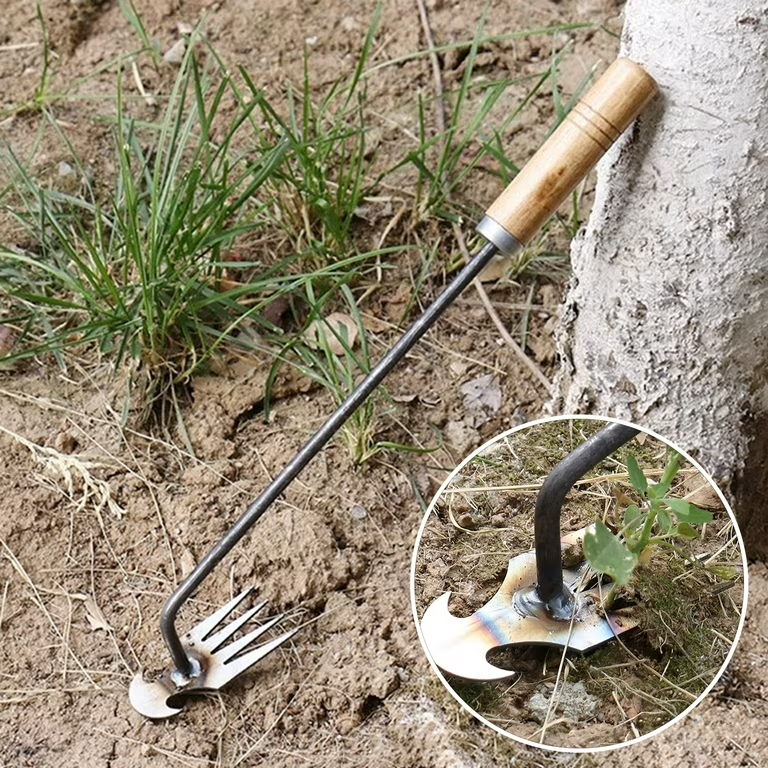
Integrating Weeders into a Comprehensive Garden Maintenance Plan
Effective weed control requires more than just occasional use of weeders; it demands integration into a comprehensive garden maintenance plan. This approach begins with proper soil preparation and plant spacing to minimize opportunities for weed growth. Regular use of weeders, combined with mulching and appropriate watering practices, creates an environment less hospitable to invasive plants. Implementing a rotation of different weeding tools and techniques prevents weeds from adapting to any single control method. For instance, alternating between hand pulling, hoeing, and occasional use of thermal weeders keeps weeds off-balance and reduces the likelihood of resistant populations developing.
Timing also plays a crucial role in effective weed management. Scheduling regular weeding sessions, particularly after rain or irrigation when soil is moist, maximizes the efficiency of weed removal efforts. Additionally, addressing weeds before they flower and set seed prevents future infestations. Incorporating cover crops or green manures into garden rotations can suppress weed growth during fallow periods while improving soil health. By viewing weeders as part of a larger, integrated approach to garden maintenance, gardeners can create thriving, low-weed environments that require less intensive management over time.
The Social and Therapeutic Benefits of Weeding
While often viewed as a chore, weeding offers surprising social and therapeutic benefits that extend beyond mere garden maintenance. Community gardens and group weeding events foster social connections, allowing individuals to bond over shared tasks and the satisfaction of collective achievement. These activities promote a sense of community ownership and pride in public spaces. From a therapeutic perspective, the physical act of weeding provides low-impact exercise, improving flexibility and strength while offering the mental health benefits of outdoor activity. The repetitive nature of weeding can induce a meditative state, reducing stress and promoting mindfulness.
Many gardeners report finding peace and clarity while engaged in weeding tasks, using the time for reflection or problem-solving. Horticultural therapy programs often incorporate weeding as a tool for rehabilitation and mental health treatment, leveraging its physical and psychological benefits. For children, participating in weeding activities teaches responsibility, patience, and the value of consistent effort in achieving goals. It also provides hands-on learning opportunities about plant biology and ecosystem dynamics. By reframing weeding as a beneficial activity rather than a burden, individuals can derive greater enjoyment and value from this essential gardening task. Weeders, in this context, become not just tools for plant control but instruments of personal and community well-being.






